How to avoid trench foot on a thru-hike
Trench foot is as gross as it sounds – here’s how to avoid it on a long backpacking trip or thru-hike
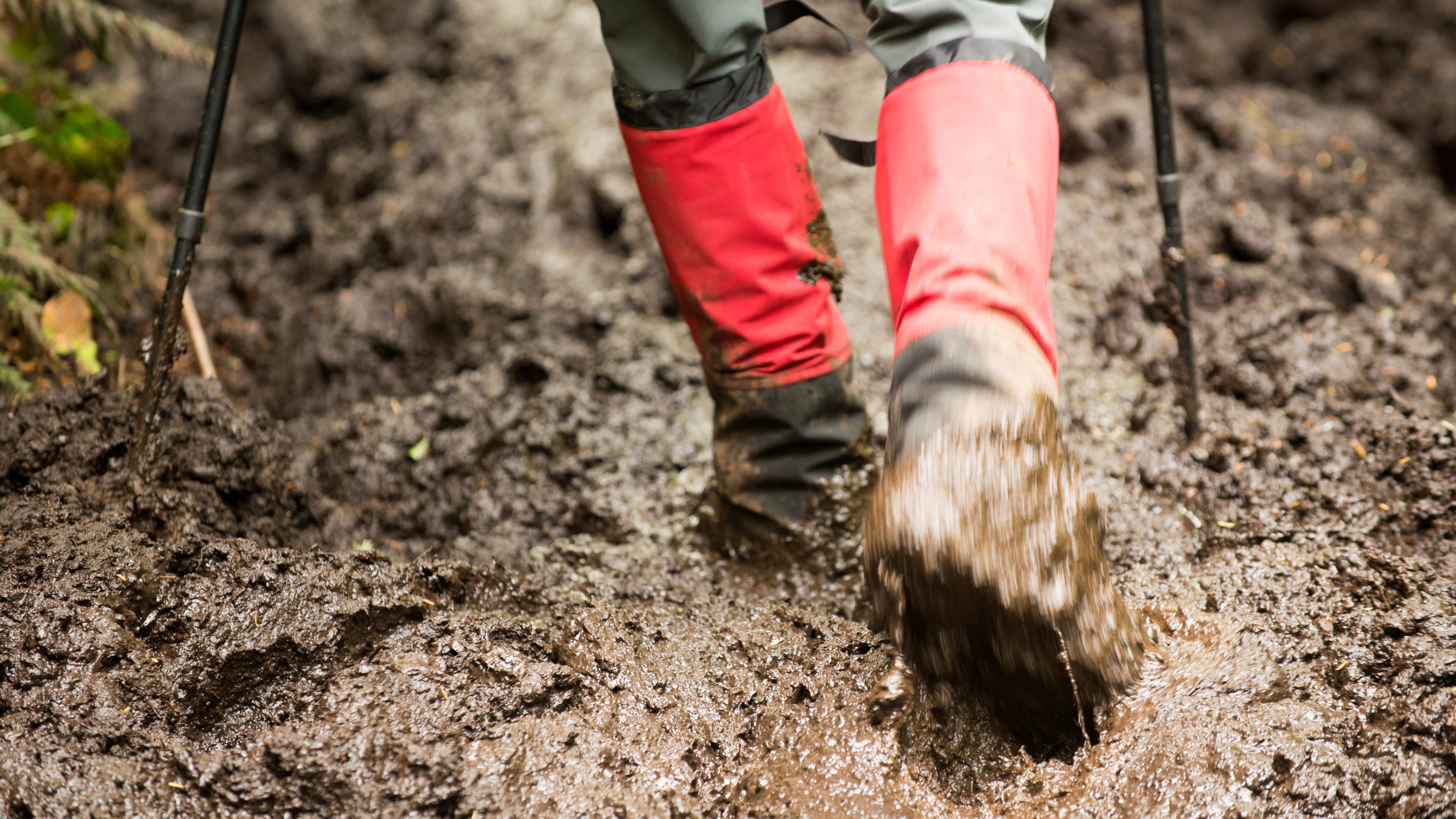
Trench foot. Yep, it’s as nasty as it sounds. Maybe even worse. You’ve been walking in the rain all day and your waterproof jacket, rain pants and hiking boots are finally wetting out. Worse still, you have days and days ahead of you, squelching your way along on the trail, before you can bail out or find a room for the night. Keeping your feet from deteriorating in these soggy conditions takes some serious trail triage, but without it, your backpacking trip or thru-hike can quickly come to a screeching halt. Let’s talk about trench foot, and the steps you can take to avoid it on the trail.

What is trench foot?
Trench foot, otherwise known as immersion foot, is a painful condition that is the result of your feet being wet for prolonged periods of time. According to the CDC, symptoms can range from tingling and itching to swelling and redness, dreaded blisters and possible tissue damage. In the worst cases, it can result in tissue removal and amputation. Though it shares many symptoms with frostbite, trench foot is most common in temperatures between 30°F and 40°F and it was named during World War II, when a mass outbreak of it resulted in nearly 80,000 casualties.
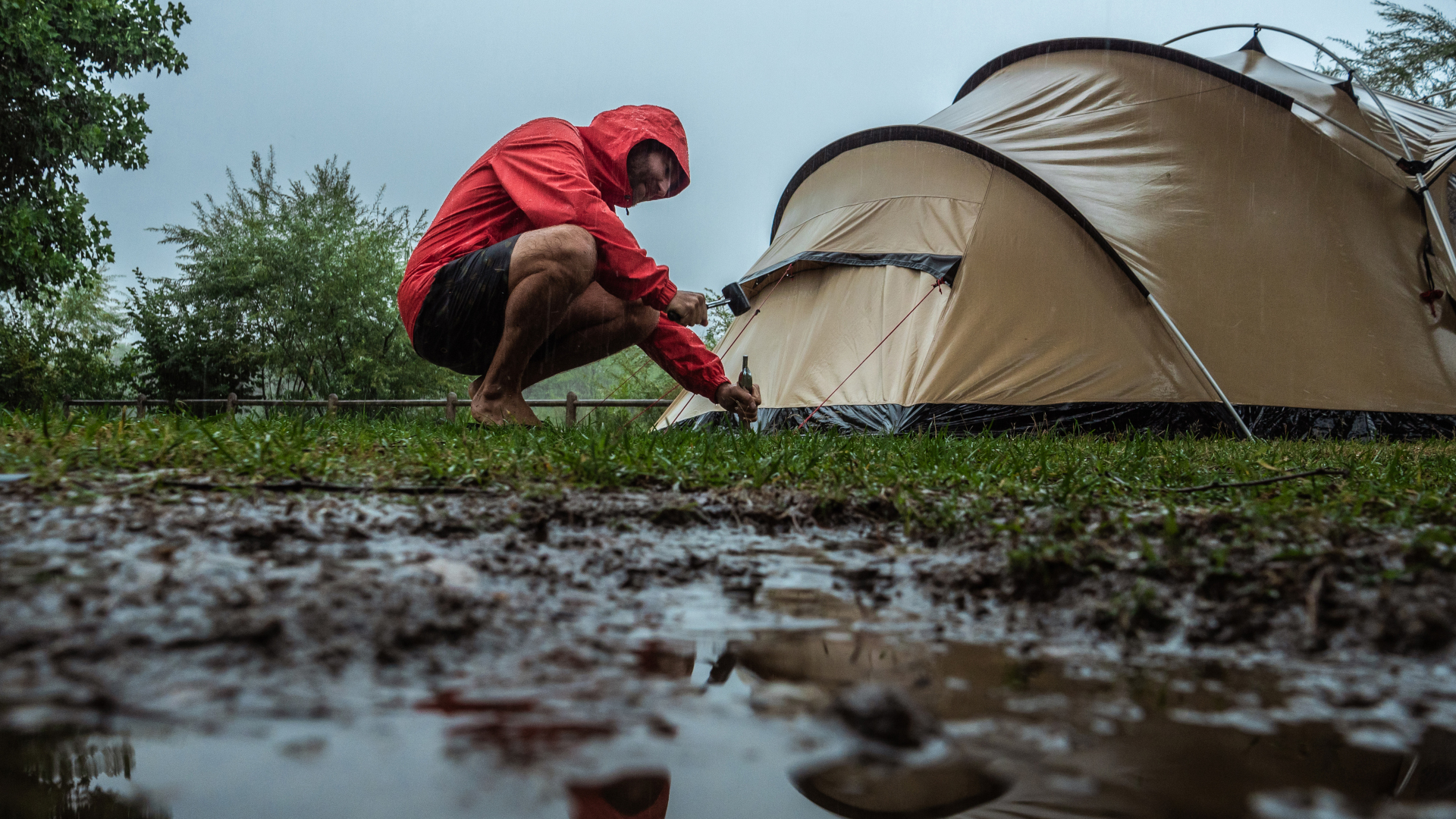
How to avoid trench foot on the trail
Getting soggy feet on a day hike isn’t a cause for concern, uncomfortable though it may be, but trench foot can plague backpackers and thru-hikers thanks to the combination of wet weather and constantly sweaty feet, even if you’re not hiking in the jungle. Needless to say, when left untreated, trench foot can become quite serious. For many of us, however, if we waited for a dry stretch to hike, we’d never get off the couch, so it’s best to know how to avoid trench foot on the trail in case the wet weather comes to stay.
1. Wear wool hiking socks
We’ve said this more times than we can count, but wool hiking socks which wick sweat and dry quickly are your best option for any hike. Wool is also naturally antibacterial, which helps combat those dank conditions inside your hiking boots where mold and fungus like to thrive. Take a look at our roundup of the best hiking socks, and look for merino wool socks or wool blend socks.
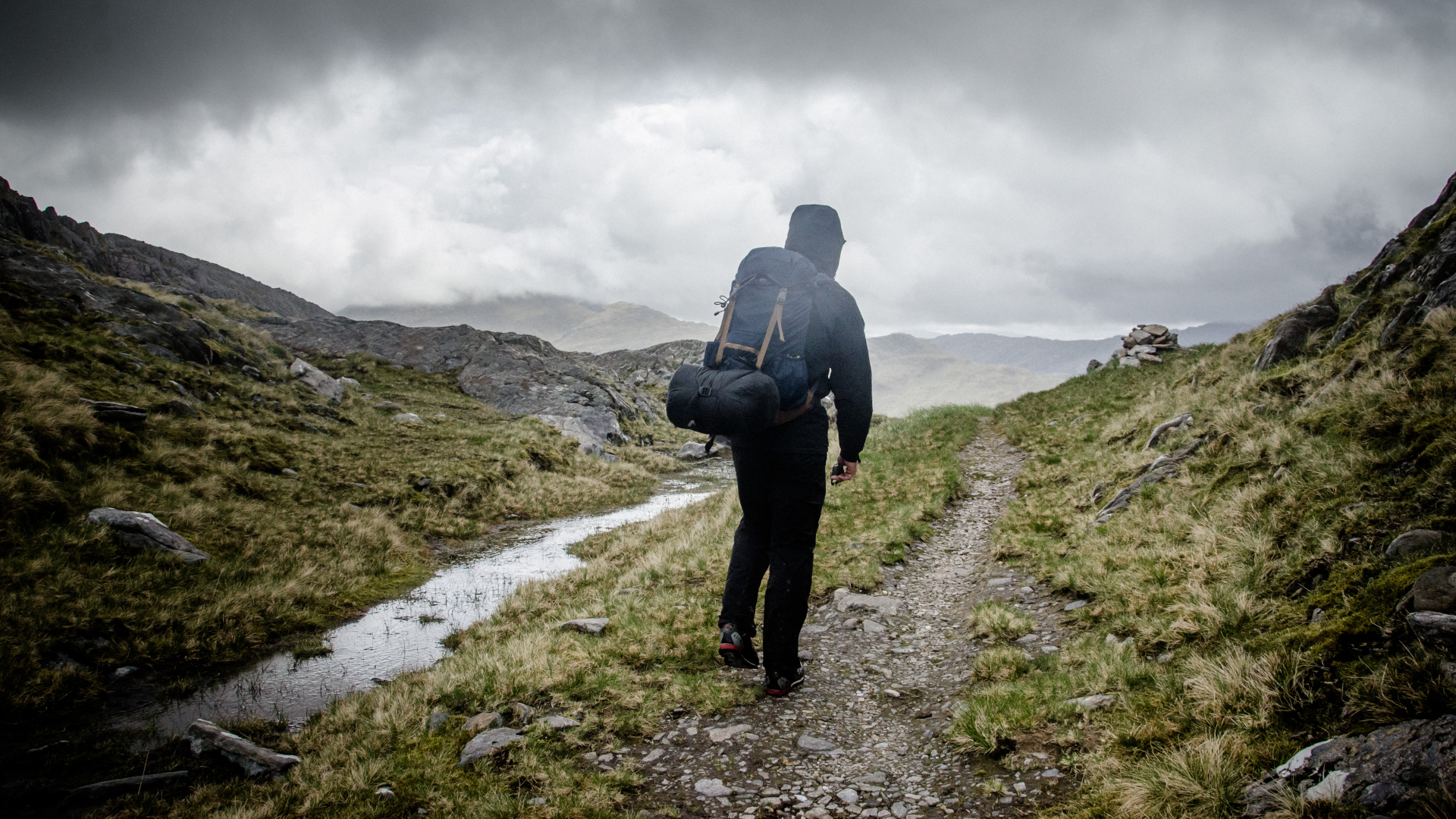
2. Bring multiple pairs of socks
While it’s true that you can wear a pair of merino wool socks for weeks or perhaps months without them getting smelly, you need to worry about more than odor in very wet conditions. Bring multiple pairs of socks on your trip so you always have a dry pair for the following day. For a multi-day backpacking trip, you can bring a pair for each day, but for a thru-hike, you’ll want a system for washing your socks, either on your rest days or using some river water and biodegradable Dr Bronner’s soap in a sandwich bag.
3. Skip waterproof hiking shoes
This might sound crazy for those of you who live in wet climates, but you might want to skip waterproof hiking shoes or boots for a long hike. Though they do help keep the water out – up to a certain point – they also aren't as breathable as non-waterproof shoes, meaning that moisture gets trapped on the inside. Plus, if you’re really getting drenched, the chances are that the legs of your hiking pants and then your socks will get wet, ultimately leading to rainwater inside your shoes anyway, in which case more breathable footwear is better to let that moisture out. Leather hiking boots can provide a good compromise between wet weather protection and breathability, while another good choice is wearing gaiters to help keep the rain out.
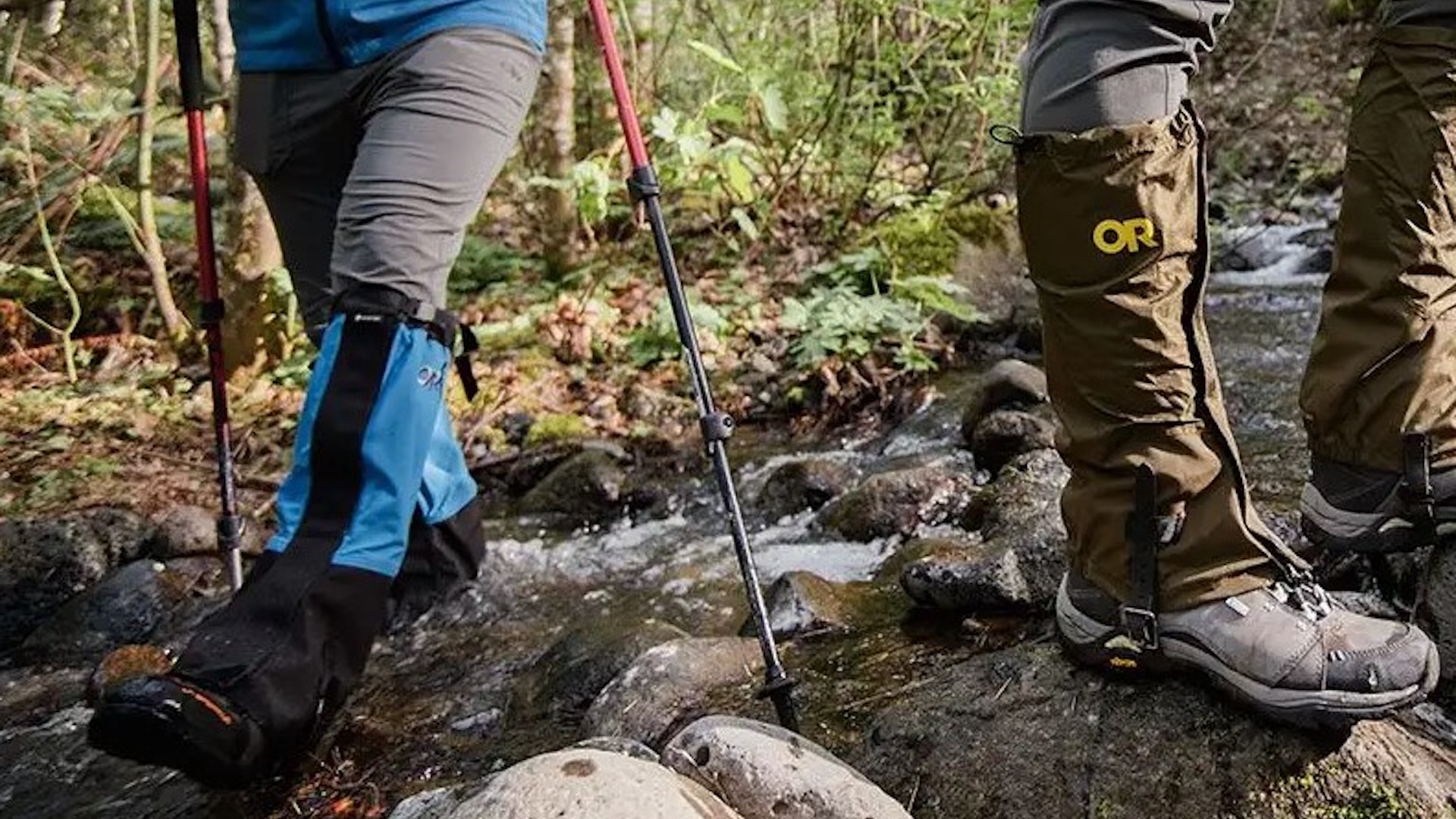
4. Air out your feet as often as possible
It can seem like a hassle to take lots of breaks and remove your socks and shoes in wet weather, but it’s a good idea to do so and allow your feet to breathe. Any time you stop, remove your socks and shoes. Carry a small micro towel so that if it’s pouring rain, you can wipe your feet dry before getting your socks back on.
All the latest inspiration, tips and guides to help you plan your next Advnture!
5. Use talcum powder
Talcum powder is a hiker’s best friend. It’s much beloved for its ability to friction and help prevent blisters, and it does this by absorbing moisture to keep your feet dry. Every time you stop for a break and take your shoes, sprinkle some talc on your feet and rub it – don’t miss the gaps between your toes.
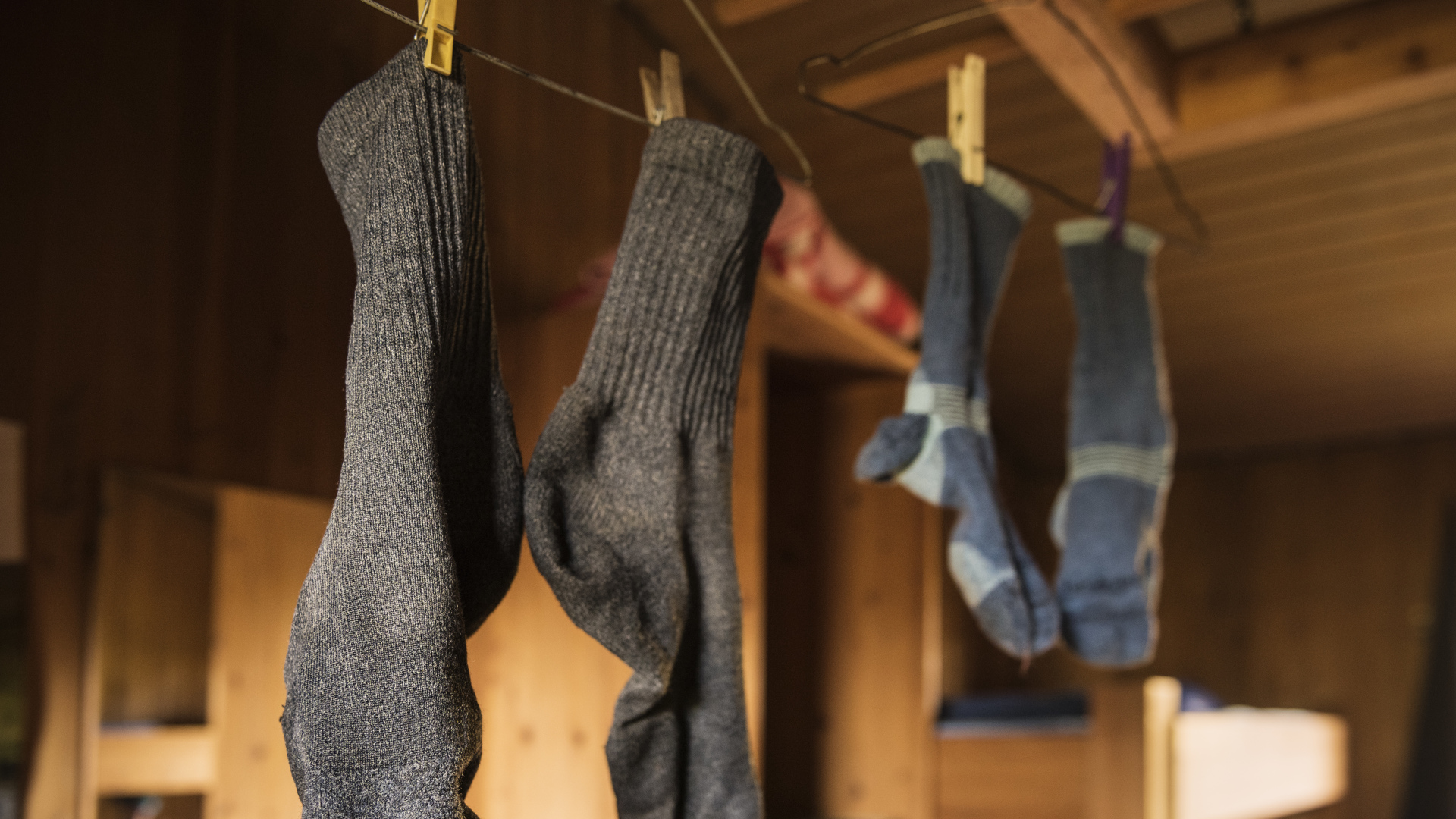
6. Dry your socks
When you get to camp at night, have a system for drying out your wet socks. Remember that wool is quick drying, however you still may need to wring them out then either hang them out by the campfire or bring them into your sleeping bag with you so your body heat dries them. Some hikers even hang their wet socks inside their jackets while walking to make the most of their body feet – just make sure you don’t drop yours.
7. Clean your feet
As we mentioned, bacteria and fungus are probably having a real party inside your wet socks, so in addition to putting on clean socks, it’s a good idea to clean your feet as well. Dipping them in the river will help, but if you can lather them up with biodegradable soap, it’s even better – just make sure you’re at least 200ft away from any bodies of water. Another, easier option is just to lather up your feet with hand sanitizer.
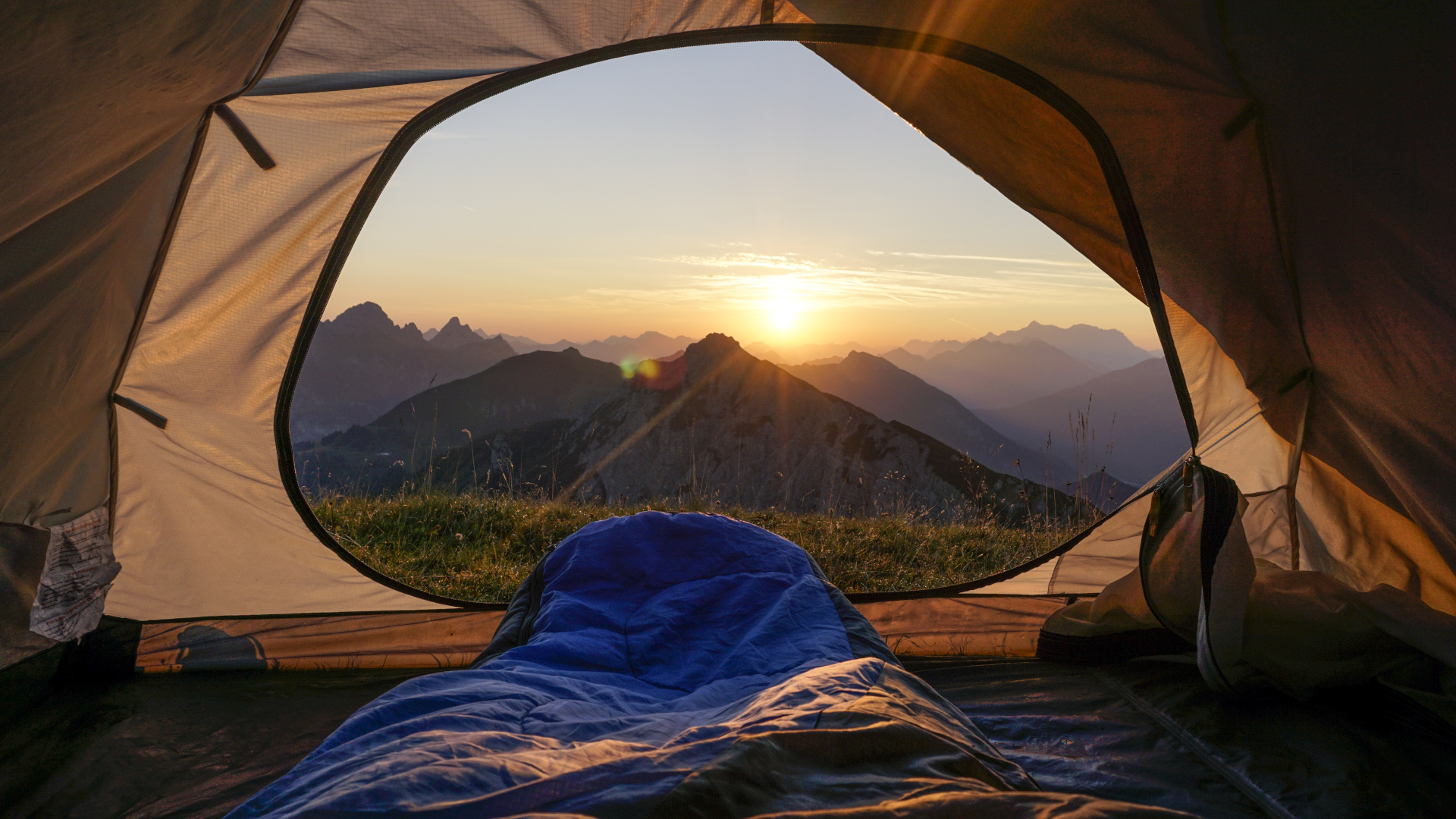
8. Sleep without socks
When it’s time to crawl inside your sleeping bag at the end of the day, you might be tempted to do so with a cozy pair of socks you’ve brought just for sleeping, but sleeping without socks is one of the top recommendations to prevent trench foot. Better to invest in a sleeping bag or camping quilt with lots of insulation around the foot box and let your feet breath overnight. On a related note, make sure you take off any blister plasters you might be wearing.
Julia Clarke is a staff writer for Advnture.com and the author of the book Restorative Yoga for Beginners. She loves to explore mountains on foot, bike, skis and belay and then recover on the the yoga mat. Julia graduated with a degree in journalism in 2004 and spent eight years working as a radio presenter in Kansas City, Vermont, Boston and New York City before discovering the joys of the Rocky Mountains. She then detoured west to Colorado and enjoyed 11 years teaching yoga in Vail before returning to her hometown of Glasgow, Scotland in 2020 to focus on family and writing.

